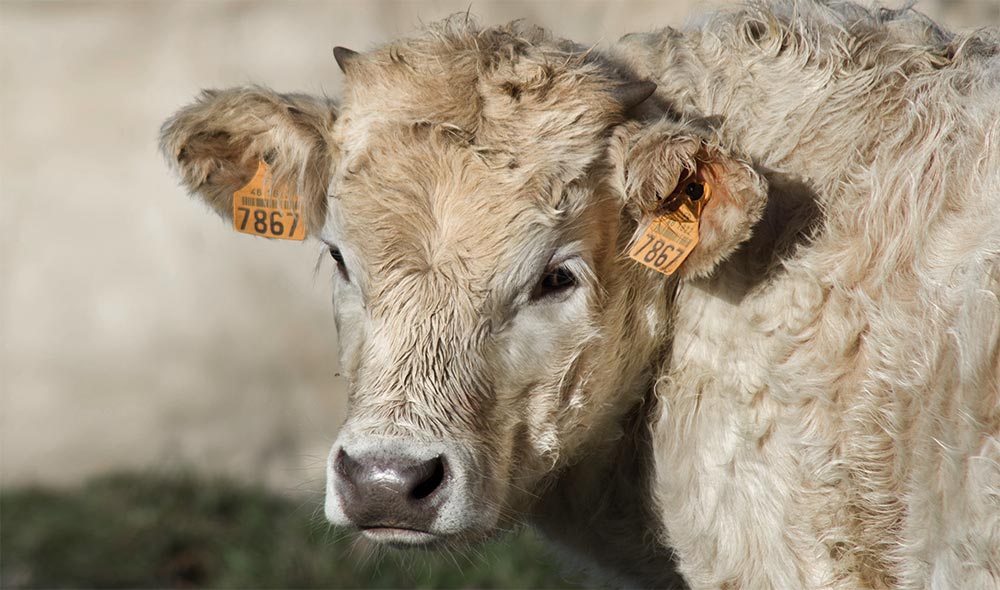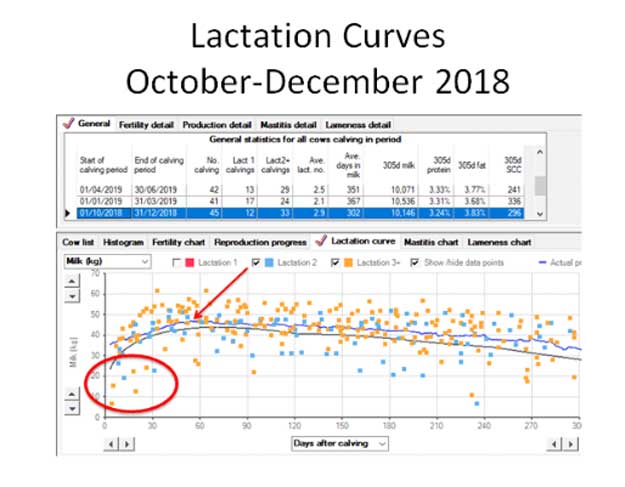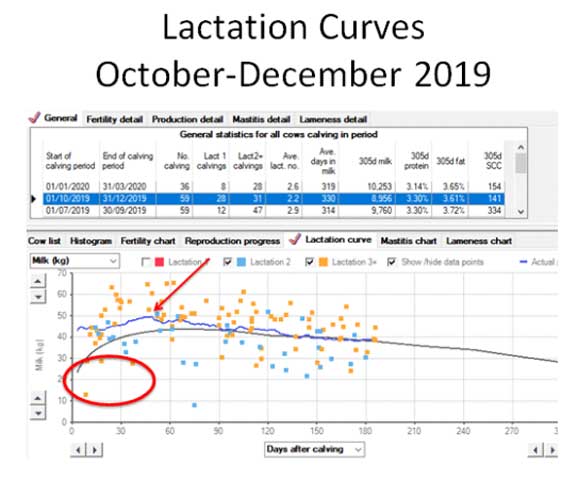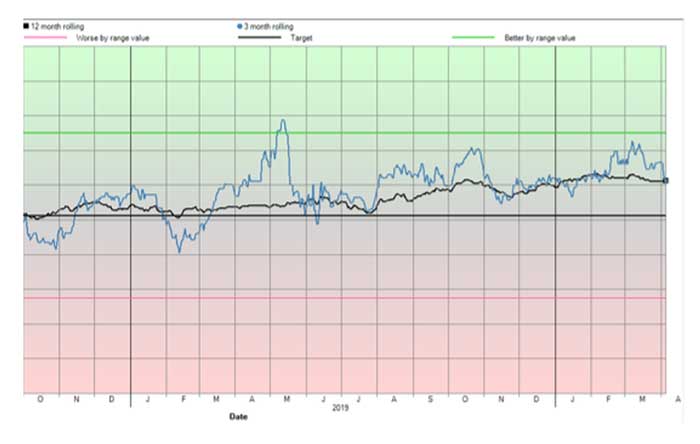16 Feb 2021
Pre and postcalving considerations: most vital ones for vets and farmers
Paddy Gordon runs through some of the many considerations for vets and farmers, including around the early dry period and close-up transition period, and regarding controlling ketosis and milk fever.

Image © jackmac34 / Pixabay

Calving is the most critical time in the production cycle of the dairy cow.
It is human nature to attribute the poor performance that may follow a metritis to the retained cleansing. We need to consider the underlying cause and our opportunity to prevent, or at least minimise, risk.
When we consider the range of conditions seen in the periparturient period – such as dystocia, retained fetal membranes, metritis, mastitis and milk fever, ketosis and displaced abomasum – common underlying causes of poor metabolic health (energy status, macromineral status or immune function) can be noted.
The conditions are interlinked, and poor function in one aspect can result in development of another condition. As an example, mastitis can result in inappetence, increasing the risk of ketosis.
Ketosis is a major consideration, and is a gateway disease to displaced abomasum and metritis. Disease prevention through good management, housing and nutrition are essential, and can have a major impact on cow health, milk production and fertility. Given the interactions between diseases, a holistic approach is required.
Early dry period
The early dry period needs attention to ensure a successful transition period. Cows should be dried off in appropriate body condition of 3 to 3.5. A range will always exist, so the expectation is that 80% of cows will fit this target.
Farms with health and fertility issues will often end up with a high proportion of outliers, with lameness and Johne’s disease resulting in poor body condition, while poor fertility often results in over-fat cows due to extended lactations.
Individual lame cows must be treated prior to the onset of the next lactation when intake and energy requirements will increase. Routine foot trimming should take place at drying off, and it is important this effectively treats lameness and trims the claw in preparation for the following lactation. Audits to assess trimming records can help establish compliance, along with inspecting feet of dry cows to ensure all have been trimmed.
Routine treatments will have been administered and this will include dry cow therapy, vaccinations and possibly trace element boluses. Dry cow therapy should always include internal sealants, as this will reduce the risk of new infections in the dry period, and uptake is both high and increasing.
Selective dry cow therapy (SDCT), using dry cow antibiotic treatments only when a history of mastitis or elevated somatic cell counts is present, reduces risk of coliform mastitis in early lactation. Critical aspects for SDCT are correct selection and appropriate hygiene at drying off.
Vaccination is most commonly for stimulation of maternal antibodies to provide passive immunity for calves against calf diarrhoea. Dam vaccination usually takes place at drying off. Some respiratory vaccines can also be administered to cows to increase passive immunity in calves. Trace element boluses can be needed where farms are reliant on forage only, or where particular deficiencies exist with iodine, selenium and copper – all of which can be associated with clinical presentations.
Nutritional requirements are to feed a so-called “Goldilocks diet”, indicating not too much, and not too little of the key ingredients of energy, protein and fibre. Far-off dry cow diets should be high fibre and low energy, which can be achieved with low-quality grazing, conserved forages (grass silage and straw mix) or a mixed ration. As always, the devil is in the detail, with farmer and nutritionist able to formulate an appropriate ration, avoiding sorting, with good feed access.
Close-up transition period
The period three weeks before due date is called the close-up transition period. On some farms, two diets are fed, with a transition ration fed in the three weeks prior to calving to acclimatise the cow to the milking diet.
This can work well, but cows must have sufficient time to settle on the close-up ration – typically 21 days, with a minimum of 18 days. Heifer integration should also be established prior to calving and for a minimum of three weeks. Close-up group target feed intakes are around 12kg to 13kg dry matter.
Some farms will feed the same diet balanced for energy and minerals throughout the dry period. The advantages are that it does not matter when the cow changes group – as the diet remains the same – or when the cow calves, as milk fever control is in place. This ration is typically formulated with high levels of straw (5kg to 7kg) and can prove effective, as milk fever has a low risk and it provides good control of energy in the early dry period.
As important is the presentation and access to the diet, with no spoilage, feed pushed up frequently and feed access unrestricted. Around 10cm of water trough space is also required, to ensure water access does not restrict intakes. Poor intakes can be a risk if the straw is unpalatable, or low protein levels can result in excessive weight loss.
Ketosis control
Cow feed intakes must be maintained in late pregnancy so every effort is taken to ensure cows are in good health. Fat cows are at high risk of ketosis and health problems in early lactation. Monensin (Kexxtone, Elanco) is licensed for use in at-risk cows, including fat cows, as use results indicate a 75% reduction in ketosis.
Kexxtone boluses contain a slowly released ionophore antibiotic that will promote the ruminal synthesis of propionate. Treatment is three to four weeks prior to the due calving date.
Attention needs to be given to housing, management and nutrition to comprehensively review all the impacts that contribute to ketosis risk. Elanco Animal Health has produced support materials for assessing transition health; “The Vital 90 Days” includes a paper-based “Health Start Checklist” and a tablet-based app.
Crucial housing factors include cow comfort, feed access and stable social groups.
Comfort is key for the heavily pregnant cow, along with adequate space or stocking rate. For housed cows, issues often arise when dry cow numbers fluctuate, and periods when numbers exceed a 90% stocking rate for cubicles, or the cubicles yield less than 10m2 of straw yard space.
Feed access should be a minimum of 75cm at all times and group changes made only once a week. The timing of any move to a transition pen must be at least 18 days before calving to allow cows adequate time to settle in the new group.
The threshold for the impact of elevated beta-hydroxybutyrate (BHB) differs between studies, but sources agree that a blood level of more than 2.6mmol/L indicates clinical ketosis. Levels above 1.0mmol/L are associated with increased disease incidence – 13.6 times greater odds of developing displaced abomasum when compared to lower values, and 4.7 times greater risk of developing clinical ketosis. This gives justification to early recognition and treatment to reduce incidence and clinical impact, with the potential to also reduce subsequent culling.
Studies have found an incidence of ketosis in the UK of around 30% and in the US of 40%, with wide variation between farms and over time.
Testing can be carried out on blood samples at the cow side using a Precision Xtra meter, sent off to laboratories, or on milk samples using the Keto-Test (Elanco Animal Health). A reasonable target is to achieve 10% below 1.2mmol/L on blood testing.
Affected cows should be clinically examined to determine if other conditions are present, as ketosis can be secondary to metritis, for example. Elevated ketones should be treated with 300ml propylene glycol daily by mouth for three to five days.
Vitamin B12 has been shown to reduce relapse rates, and oral fluid therapy may assist recovery. Cows’ appetite and milk yield should be closely monitored for the following week in case of treatment failure or unrecognised disease.
Milk fever control
Hypocalcaemia can be kept at a very low clinical incidence and should not exceed 5%, with appropriate mineral levels fed. While inputs are beyond the scope of this article, vets should monitor incidence on a regular basis. This may be on the basis of clinical records, assessing milk fever and retained fetal membrane incidence.
Alternatively, regular blood testing of cows within 24 hours of calving can be used. Blood samples are measured for calcium, with a target of less than 20% below normal.
A 200-cow robot dairy had a herd health investigation to assess opportunities to improve transition cow performance and fertility. A number of issues involving management, housing and nutrition were identified at the visit. Areas to focus on, along with key performance indicators, were established.Farm expansion with installation of an additional robot had resulted in retention of cows to allow organic expansion. This can result in more problem cows being retained. On this particular farm no issues were found with lameness or Johne’s disease prevalence. Dry period length was variable, however, with a high proportion of cows having extended dry periods, and the mean dry period length was 70 days.
The author’s experience is these cows are more prone to be fat and prone to metabolic disease. In contrast, the milking herd was found to be in low body condition compared to target due to the dry summer in 2018 limiting forage quality and quantity. This can impact on fertility performance, as it is likely to reflect a period of excessive body condition score loss.
Condition score change takes time to implement, and limited action is possible with dry cows, and not recommended. Monensin boluses were recommended in cows with extended dry periods, across 70 days.
Housing issues noted were the need to ensure dry cows had sufficient feed space – particularly in the three weeks prior to calving. This was achieved simply by grouping cows where space was available.
A single ration was fed across the dry period, so cows could be placed in a far-off or transition group on the same ration. Straw chop length was found to be too long and risked sorting, so additional effort in straw chopping was recommended. Regular cleaning of the feed passage was recommended for close-up cows. The overall aim was to achieve a consistent ration and intakes from a single diet, prevention of sorting and no spoilage.
Calving health was to be monitored, looking at clinical diseases of retained fetal membranes and metritis, but also monitoring the incidence of ketosis, which is more often sub-clinical.
Every cow was assessed for ketosis at day four after calving with the cow side blood test. Cows with a BHB level greater than 1.0mmol/L were given 300ml of oral propylene glycol daily for three days, and their health and production were closely monitored. In addition, the farm used a cow activity meter; the Genus Breeder Tag system.
This device monitors cow activity at the feed face – both the number of visits and the time spent feeding. Early changes in behaviour, indicating poor health, such as ketosis or metritis, can be identified and acted on.
Results at the end of 2018 showed a ketosis level of 27%, which is typical of many UK herds. A similar incidence of periparturient disease (milk fever, metritis and mastitis) was seen.
The farmer was keen to adopt the advice given and recognised “key aspects in dry cows are feed space and straw quality – it is essential to keep the rumen full”. He found “ketosis testing is worthwhile as it allows early intervention with fluids and propylene glycol” and went on to “notice milk yield response in these cows, and I am sure it prevents more severe issues”.
The author noticed the farm had fewer underperforming animals, as is shown in Figures 1 and 2. Circled are the underperforming cows and the arrow shows peak yield.


The impact on milk yield has been an increase in peak yield from 46kg to 50kg, for older cows. This has had an impact on future fertility, with a 2% improvement seen in pregnancy rate, and the 100-day in-calf rate has improved from 46% to 49% (Figure 3).

In summary, how high and how long the lactation is depends on preparation (consider dairy cows as high-performance athletes), nutrition (with access as important as diet), monitoring outcomes early (ketosis) and early intervention on problem cows (having a treatment plan). Consistent, reliable periparturient performance will follow through into fertility performance.
As the farmer said afterwards, it is “a case of identifying the one per cents, with gains to be had from periparturient cow focus”.
